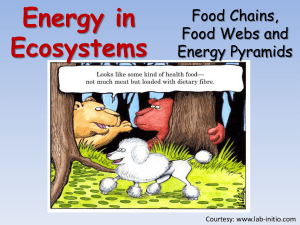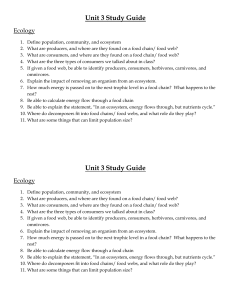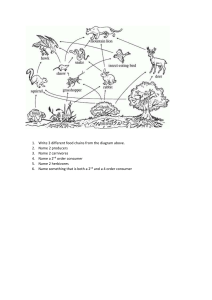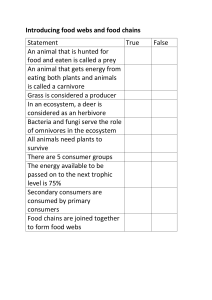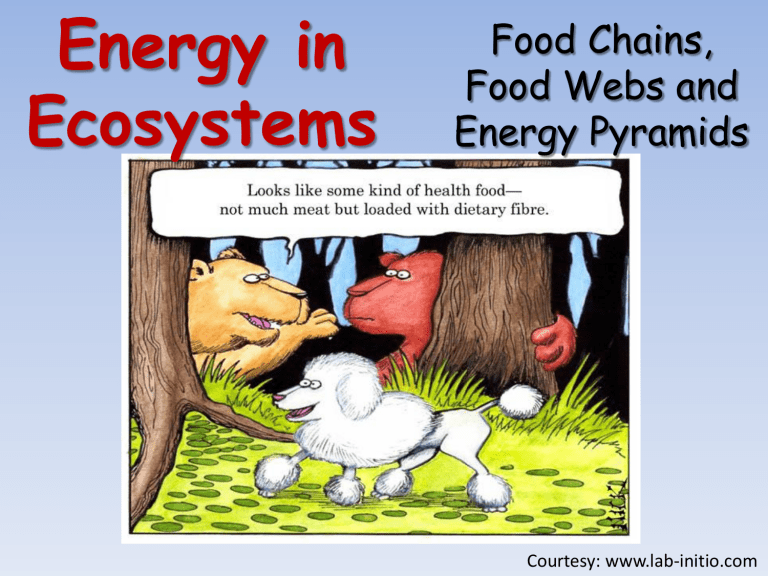
Energy in Ecosystems Food Chains, Food Webs and Energy Pyramids Courtesy: www.lab-initio.com Producers (Autotrophs) • Photosynthetic organisms – Capture energy from sunlight, CO2 and H2O – Most producers are photosynthetic • Chemosynthetic organisms – Capture energy from chemical compounds in the surroundings Consumers (Heterotrophs) • Herbivores – Eat only plants and fungi • Omnivores – Eat both plants/fungi and animals • Carnivores – Eat only animals • Detrivores – Eat dead organic matter • Decomposers – Break down organic matter into simpler compounds Movement of Energy • Trophic Structures – Manner in which energy moves through an ecosystem – Each ecosystem has its own unique trophic structure Biotic Energy Movement • Producers – Autotrophs (Photosynthesizers, Chemosynthetic organisms) • Primary consumers – Herbivores and omnivores that eat producers • Secondary consumers – Carnivores and omnivores that eat herbivores • Tertiary consumers – Carnivore eats another carnivore • Decomposers and Detrivores – Consume decaying producers and consumers Food Chain Energy is lost in each step up a food chain Only 10 percent of the energy from one level on the food chain is available to the next level Food Webs • Many consumers and decomposers have more than one food source • Movement of energy occurs in complex webs rather than in simple chains Arctic Marine Food Web A Simplified Food Web? Energy Pyramids • Energy pyramids show the reduction of available energy at each higher trophic level Biomass Distribution Why a Pyramid? • Producers must comprise most of the mass of the biotic part of an ecosystem – This is the ONLY place where energy (solar) enters the ecosystem • Energy is always lost in the form of heat, so energy transfers are no more than 10% efficient • Each trophic level must be supported by a 10/1 energy ratio below it The 10% Rule
